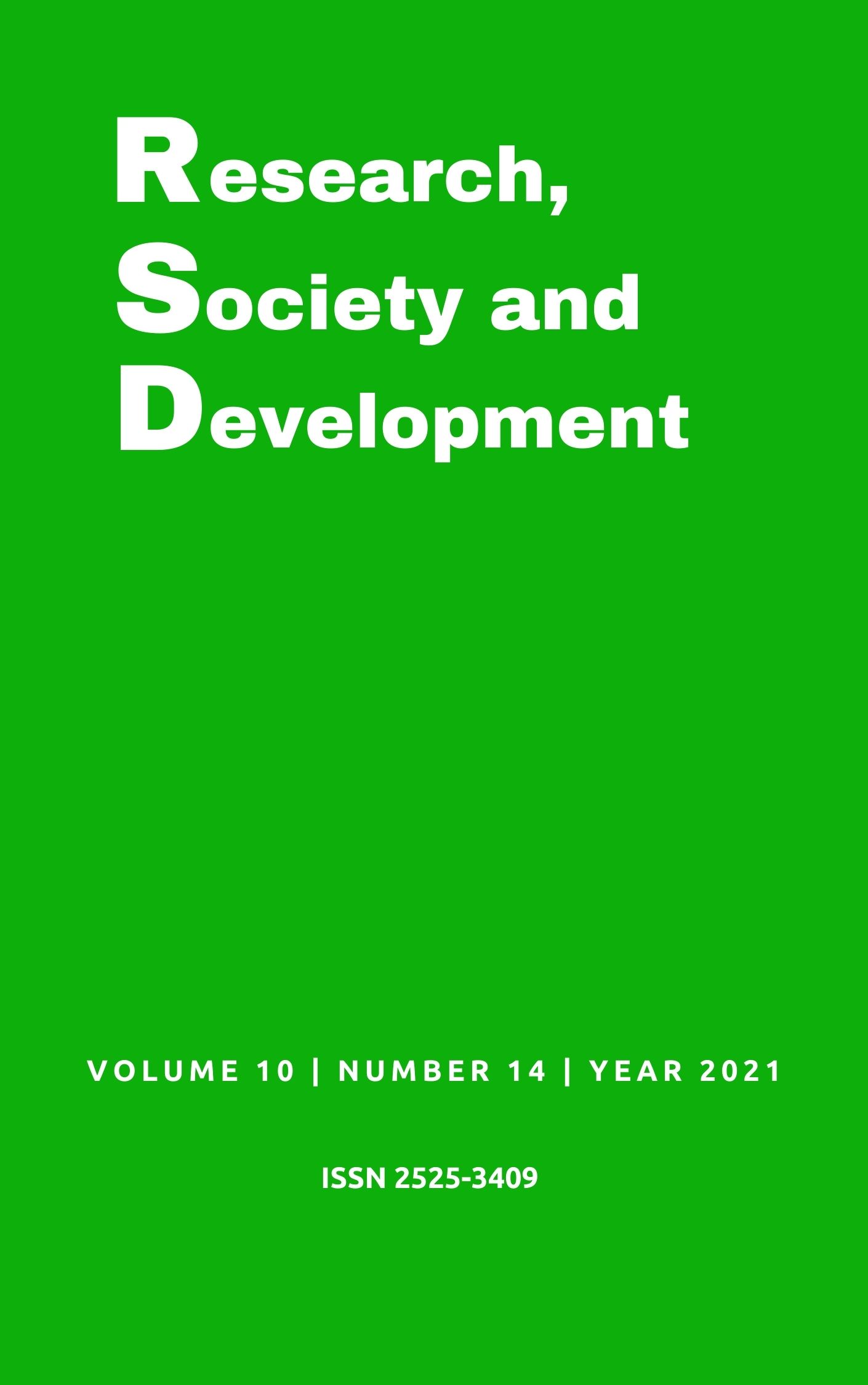Analysis of the attributions of physical therapists and physical educators in the home care of patients after Covid-19
DOI:
https://doi.org/10.33448/rsd-v10i14.22445Keywords:
Physiotherapy, Physical education, Covid-19, Home care.Abstract
The coronavirus disease that has affected the world population had a high rate of recoveries in 2021, according to data from the Ministry of Health. The sequelae that affect the recovered patients mainly involve dyspnea, muscle fatigue, neurocognitive difficulties, and consequently a decrease in physical conditioning. After the hospital period, it is necessary that the patients seek professionals for treatment, where home-care has had great prominence. The multidisciplinary follow-up is extremely important, where the objective of this review is to present the contributions and differences in the home care of patients after Covid-19 of physical therapists and physical educators, who despite having similarities regarding the use of physical exercises in their care, the therapeutic goals are divergent, however, both contribute significantly in the stages of home rehabilitation. The federal councils are the ones that determine the attributions of each one in the treatment of this pathology, because although the studies involving the SARS-CoV-2 virus are still in process, there is evidence of the benefits provided by each professional in the post-hospital phase.
References
Brasil (2013). Código de ética e deontologia da Fisioterapia. Conselho Federal de Fisioterapia e Terapia Ocupacional (COFFITO).
Brasil (2015). Código de Ética dos Profissionais de Educação Física registrados no Sistema CONFEF/CREFs. Conselho Federal de Educação Física. https://www.confef.org.br/confef/resolucoes/381.
Brasil (2016). Acordão N° 473 – Dispõe sobre o papel do Fisioterapeuta em relação ao procedimento de montagem e/ou toca de circuitos dos ventiladores mecânicos. Conselho Federal de Fisioterapia e Terapia Ocupacional (COFFITO).
Brasil (2021). Boletim Epidemiológico Especial: Doença pelo novo coronavírus. Ministério da Saúde.
Brasil (2021). Coronavírus: o que você precisa saber e como prevenir o contágio. Ministério da Saúde.
Brasil (2021). Exercícios físicos auxiliam na reabilitação de recuperados da Covid-19. Revista Educação Física. https://www.confef.org.br/confef/comunicacao/revistaedf/4699.
Brasil (2021). Informações rápidas sobre VNI, Oxigenoterapia, Prona Espontânea e Exercícios respiratórios na COVID 19. Associação Brasileira de Fisioterapia Cardiorrespiratória e Fisioterapia em Terapia Intensiva (ASSOBRAFIR). https://assobrafir.com.br/covid-19/
Brasil (2021). Recomendação para avaliação e reabilitação pós covid-19. Associação Brasileira de Fisioterapia Cardiorrespiratória e Fisioterapia em Terapia Intensiva (ASSOBRAFIR). https://assobrafir.com.br/covid-19/.
Brasil (2021). Ventilação não- invasiva ou cânula nasal de alto fluxo no âmbito domiciliar. Associação Brasileira de Fisioterapia Cardiorrespiratória e Fisioterapia em Terapia Intensiva (ASSOBRAFIR). https://assobrafir.com.br/covid-19/.
Cássio Magalhães da Silva e Silva et al. Evidence-based physiotherapy and functionality in adult and pediatric patients with Covid-19. Journal of Human Growth Devvelopment 2020, 30(1):148-155.
Filho. A. L. M (2021). A Contribuição do profissional de educação física em equipe multiprofissional para recuperação de pacientes pós covid 19. Revista de Administração do CESMAC. Vol. 10.
França EF, Macedo MM, França TR, Cossote DF, Gonçalves L, Santos PAC, & Miyake, G. M (2020). Triagem de saúde para participação nos programas de exercício físico pós-pandemia de COVID-19: uma ação necessária e emergente ao profissional de educação física. Internacional Journal of Medicine and Health.; 3:1-4
Gastaldi, A. C. (2021). Fisioterapia e desafios da Covid-19. Revista Fisioterapia Pesquisa.
Goldman-Israelow B (2021). Coronavirus replication cycle (template).
Jimeno-Almazan, et al. (2021). Post-Covid-19 Syndrome and the Potential Benefits of Exercise. International Journal of Environmental Research and Public Health.
Menegatti, A. P. L., Fantin, R. A. B., & Bernardes Júnior, L. (2021). Influência do Atendimento Fisioterapêutico Home Care em Idosos Pós Covid-19. Revista Ibero-Americana de Humanidades, Ciências E Educação, 7(8), 318–332. https://doi.org/10.51891/rease.v7i8.1888.
Santana, A. V., Fontana, A. D., & Pitta, F. (2021). Reabilitação pulmonar pós-COVID-19. Jornal brasileiro de Pneumologia, Vol. 47, n° 1. São Paulo.
Sheehy, L. M. (2020). Considerations for Postacute Rehabilitation for Survivors of Covid-19. JMIR Public Health and Surveillance.
Souza, M. O. de, Silva, A. C. S. e, Almeida, J. dos R., Santos, J. F. M., Santana, L. F., Nascimento, M. B. C., & Souza, E. C. de. (2020). Impactos da COVID-19 na aptidão cardiorrespiratória: exercícios funcionais e atividade física. Revista Brasileira de Atividade Física & Amp; Saúde, 25, 1–5. https://doi.org/10.12820/rbafs.25e0171
Spruit, M. A., et al. Covid-19: Interim Guidance on Rehabilitation in the Hospital and Post-Hospital Phase from a European Respiratory Society- And American Thoracic Society-Coordinated International Task Force. European Respiratory Journal 56 (6). 2020.
Toledo, A. M. (2021). Exercícios Físicos domiciliares e práticas de educação em saúde: estratégias de enfrentamento durante a pandemia covid-19. Universidade de Brasília.
World Health Organization (2020). Coronavírus Disease (COVID-19).
Downloads
Published
Issue
Section
License
Copyright (c) 2021 Mayara Cardoso Macedo; Bárbara Lira Bahia Mendes

This work is licensed under a Creative Commons Attribution 4.0 International License.
Authors who publish with this journal agree to the following terms:
1) Authors retain copyright and grant the journal right of first publication with the work simultaneously licensed under a Creative Commons Attribution License that allows others to share the work with an acknowledgement of the work's authorship and initial publication in this journal.
2) Authors are able to enter into separate, additional contractual arrangements for the non-exclusive distribution of the journal's published version of the work (e.g., post it to an institutional repository or publish it in a book), with an acknowledgement of its initial publication in this journal.
3) Authors are permitted and encouraged to post their work online (e.g., in institutional repositories or on their website) prior to and during the submission process, as it can lead to productive exchanges, as well as earlier and greater citation of published work.


